The 10 most jaw-dropping space images of 2022
Cosmic cliffs, smiling suns and Martian "polygons" made this year a blast for stargazers everywhere.
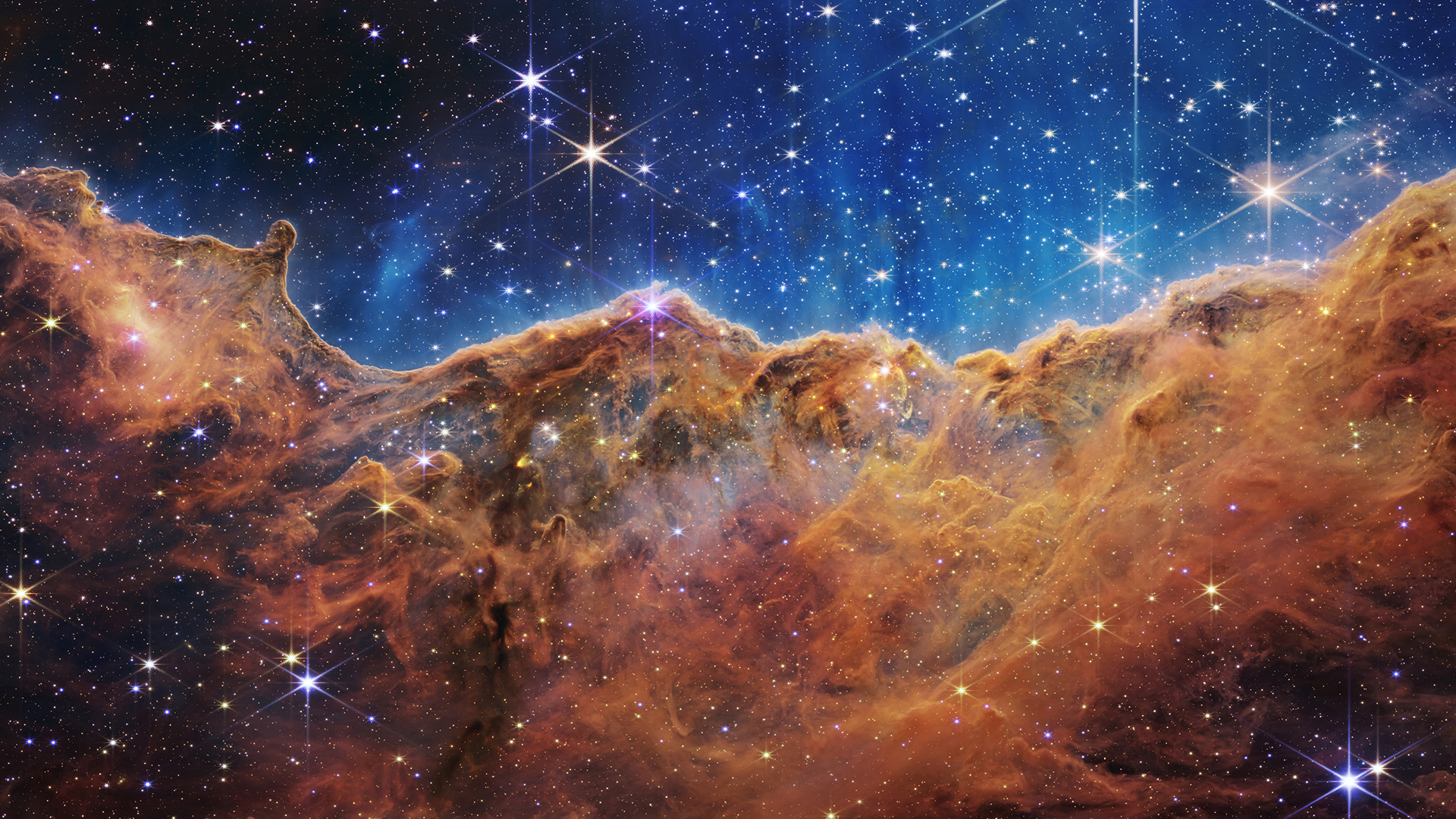
For all of its faults, 2022 was arguably the greatest year for space observation in human history.
With the launch of the James Webb Space Telescope (JWST), astronomers looked deeper into the universe than ever before, taking pictures of 13 billion-year-old galaxies with unrivaled clarity. But Webb was hardly working alone; veteran space telescopes like the Hubble continued their careers of revealing space's most spectacular secrets, while citizen scientists here on Earth captured auroras, solar storms and other wonders visible from their own backyards.
Here are 10 of our favorite space photos of 2022.
1. The Pillars of Creation
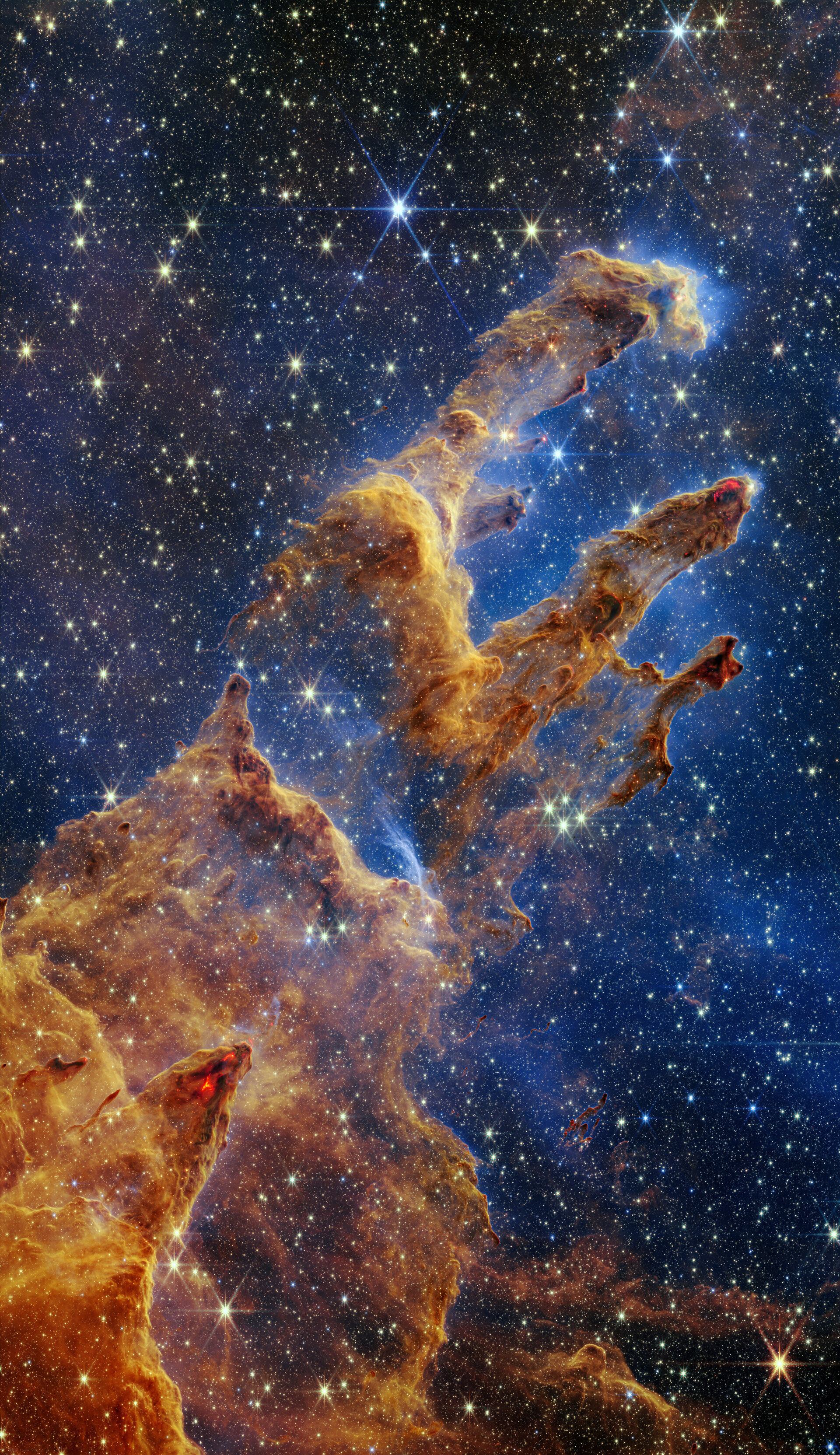
Located 6,500 light-years from Earth, the soaring pillars of creation are a vast span of sculptured gas and dust in the Eagle Nebula. The pillars have been an infamous Milky Way landmark for decades, but the JWST's crisp image breathed new life into the ancient and mysterious objects.
2. Put a ring on it
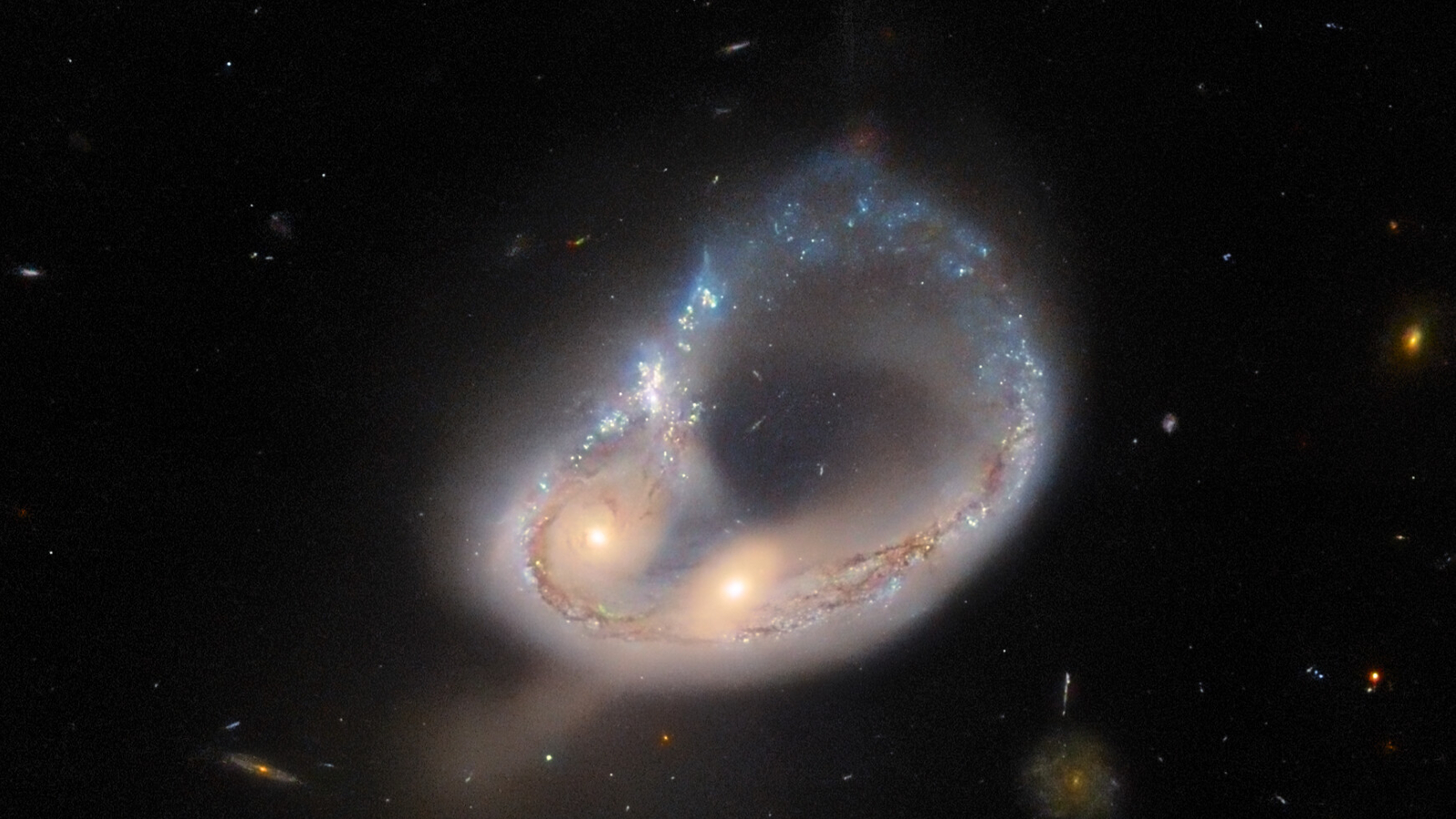
While peering at the southern constellation Eridanus, NASA's Hubble Space Telescope caught a pair of galaxies having an intimate moment. As the two galaxies, collectively known as Arp-Madore 417-391, slowly merge together, gravity twists and warps their stars into an enormous ring. Now that's commitment.
3. A solar explosion
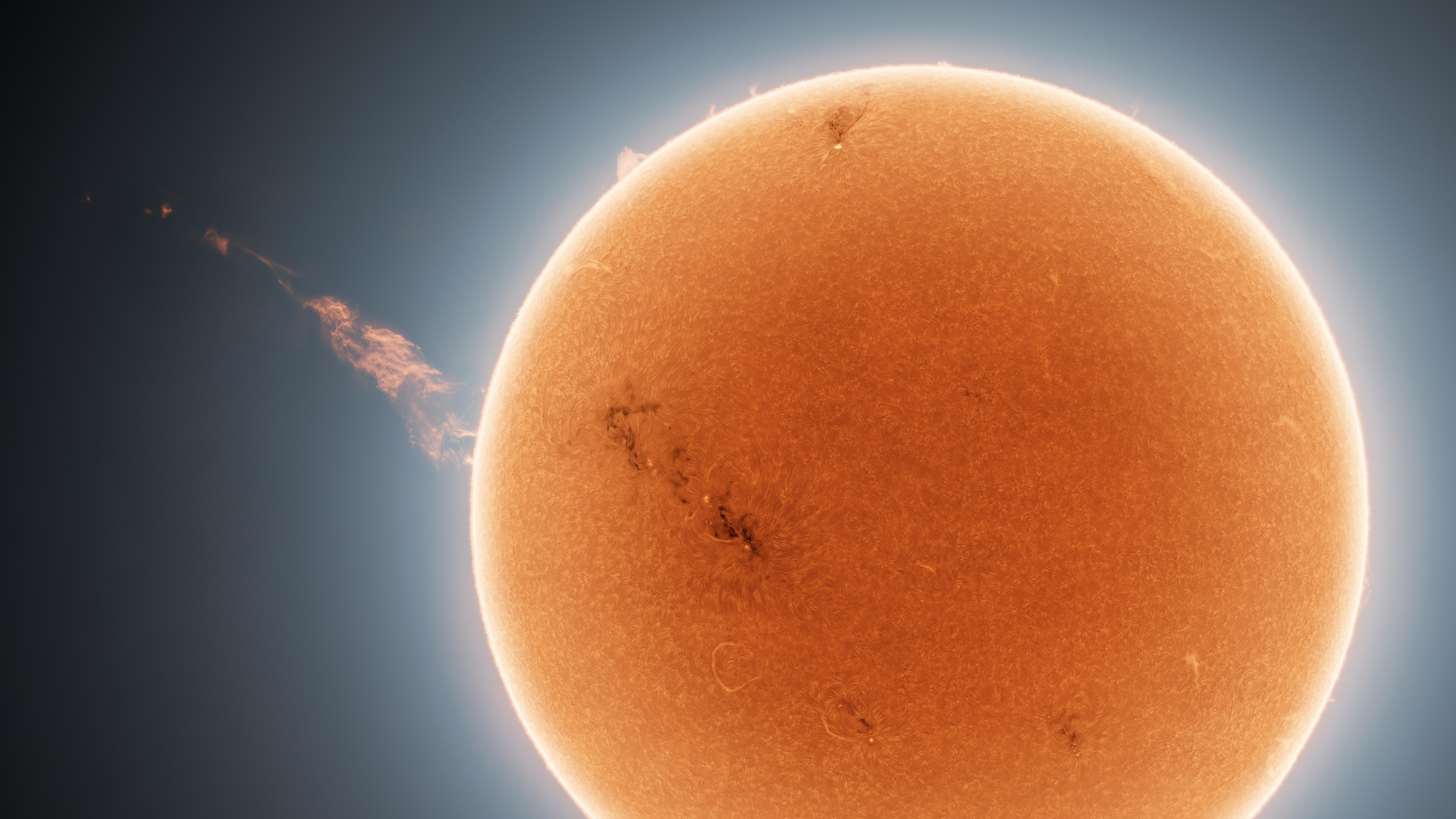
A 1 million-mile-long jet of plasma rockets out of the sun in this epic time-lapse image. Photographer Andrew McCarthy created this composite image by stacking hundreds of thousands of individual shots on top of each other over a six-hour period, revealing the violent evolution of a coronal mass ejection.
4. Strange 'polygons' on Mars
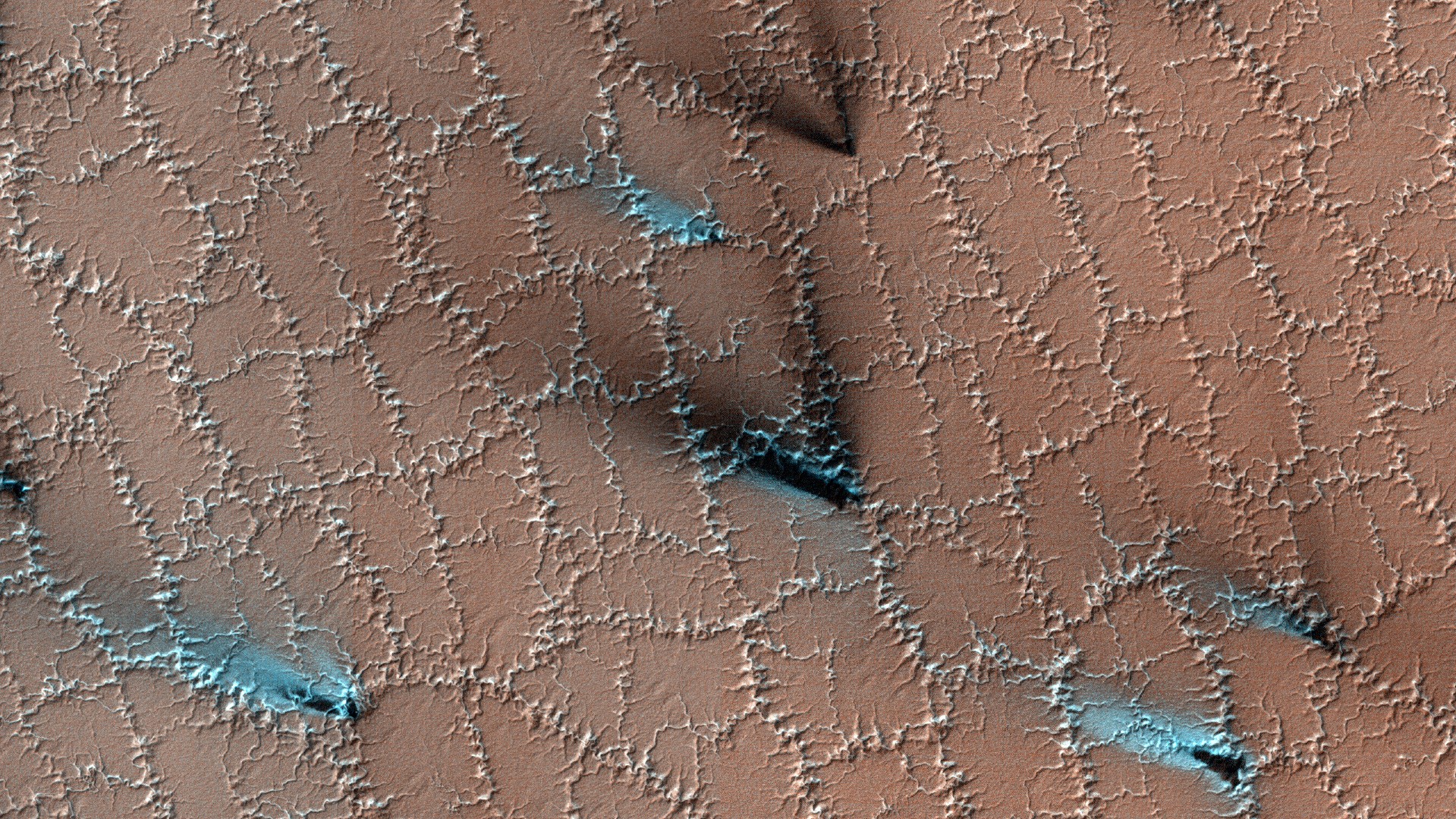
NASA's orbiting High Resolution Imaging Experiment (HIRISE) camera saw a strange sight while soaring over the high latitudes of Mars: patterned "polygons" of cracked soil, stretching on for miles. These patterns are a regular feature of Martian springtime, created as ice turns to gas on the thawing Martian surface.
5. Cartwheeling through the cosmos

Glowing dust tumbles out of the spiral Cartwheel Galaxy 500 million light-years from Earth in this stunning JWST image. The galaxy's distinct wagon wheel shape is the result of a cosmic collision between the spiral galaxy and a smaller galaxy not visible in this image.
6. A rare pink aurora
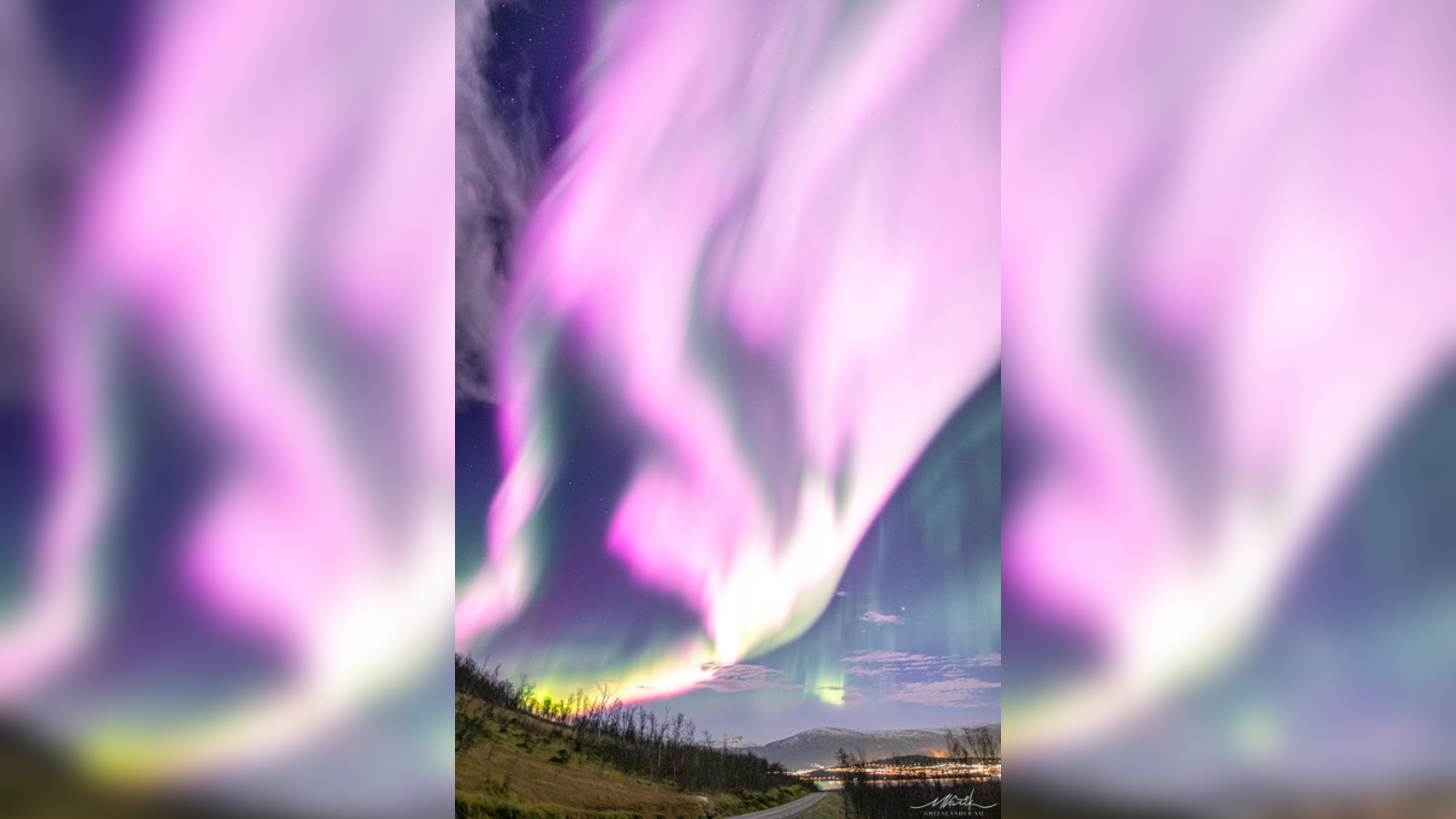
Brilliant pink auroras filled the sky over Norway in November following a powerful solar storm. Solar particles penetrated Earth's atmosphere deeper than usual, colliding with nitrogen atoms and causing them to emit pink light. This gorgeous image was provided by Markus Varik, a northern lights tour group leader.
7. The cat's eye mystery

Astronomers modeled the mysterious Cat's Eye Nebula (left) based on observations from the Hubble (right) and other telescopes. The team learned that the nebula's bizarre, overlapping bubble structure was created by twin beams of wobbling, high-density gas blasted into space by a dying star at the nebula's center.
8. Cosmic cliffs

One of JWST's debut images was a cosmic landscape painting of the Carina Nebula, located about 7,600 light-years from Earth. Illuminated and sculpted by the radiation of thousands of baby stars, this is one of the most active star-forming regions ever discovered.
9. The sun wore a smile
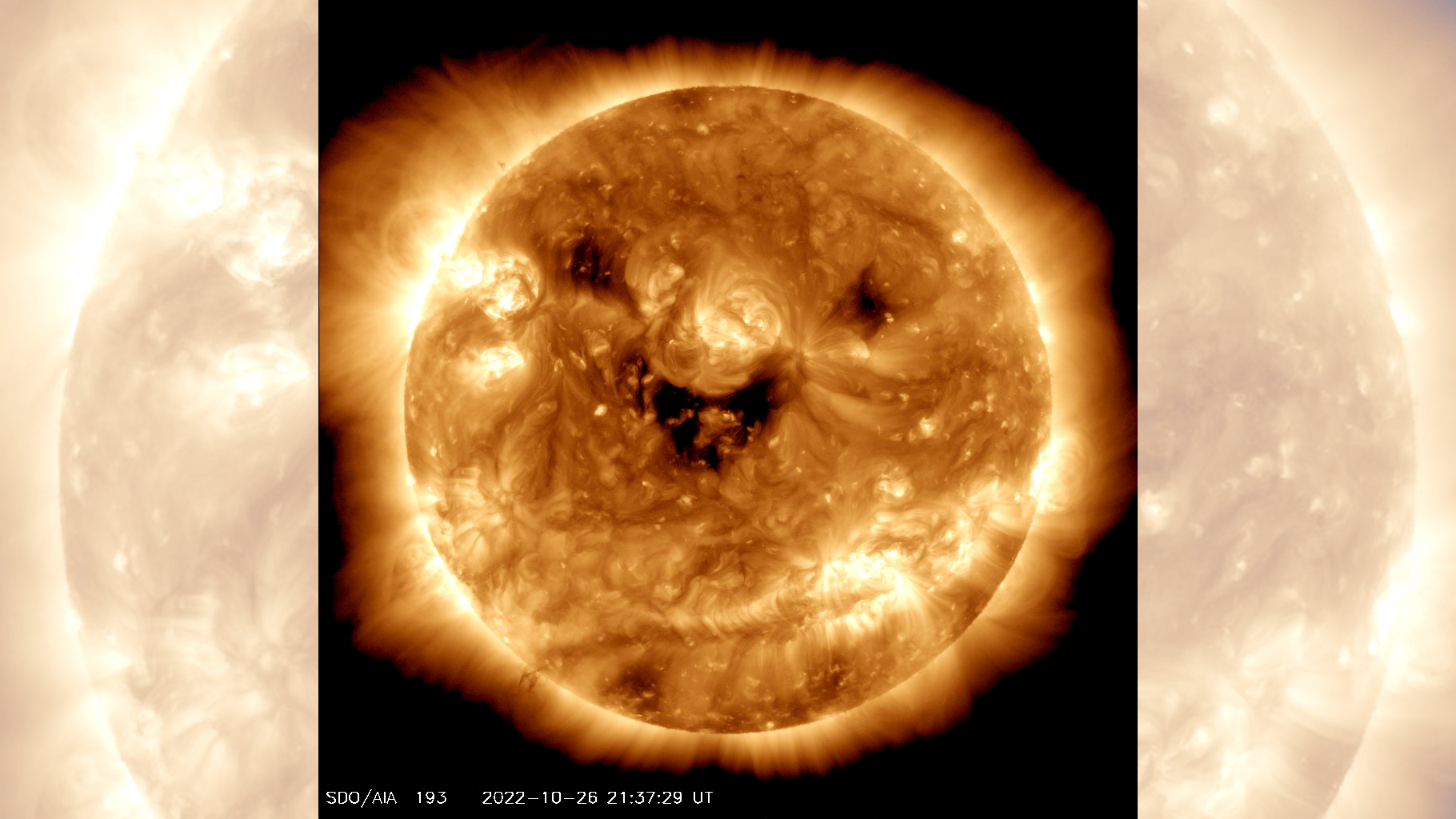
While monitoring our star for potential storms, NASA's Solar Dynamics Observatory saw a surprise smile on the face of the sun. Created by a chance arrangement of coronal holes, or regions in the sun's outermost atmosphere where solar wind gushes out, this smiling star was in the midst of showering Earth with charged solar particles.
10. The fires of Orion

The Flame Nebula, a vast field of gas and dust in the Orion constellation, blazes bright in this close-up taken by the Atacama Pathfinder Experiment in the Chilean desert. Despite the fiery appearance, this region of space is only a few tens of degrees warmer than absolute zero.
Ready for more cosmic beauty? Check out these 35 jaw-dropping images from the James Webb Space Telescope.
Sign up for the Live Science daily newsletter now
Get the world’s most fascinating discoveries delivered straight to your inbox.

Brandon is the space/physics editor at Live Science. His writing has appeared in The Washington Post, Reader's Digest, CBS.com, the Richard Dawkins Foundation website and other outlets. He holds a bachelor's degree in creative writing from the University of Arizona, with minors in journalism and media arts. He enjoys writing most about space, geoscience and the mysteries of the universe.










